Kofa Queen Canyon
30-31 May 2009
by
Henry Detwiler
A night of camping with Cody and a hike up to the saddle below Signal Peak to find the specialty species of Yuma County.
Click on
thumbnail pictures for full-sized photos.

Cody Hurlock and I camped out at Kofa Queen Canyon in the Kofa National Wildlife Refuge on Saturday night (30 May). This scenic canyon is just north of the more accessible Palm Canyon, and is about 65 miles north of Yuma. The canyon floor is filled with saguaros, mesquites, palo verdes, a few desert willows, and innumerable desert shrubs I can't identify. The canyon walls are dotted with agaves and ocotillos, and Signal Peak (4700') towers above it all. Some of the birds that breed here can be found nowhere else in Yuma County.

Sunset
|
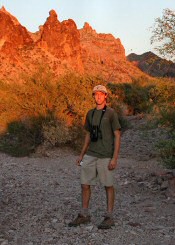
Cody
We drove into the canyon late on Saturday to avoid the 100-degree heat of the day. CACTUS WREN and BLACK-TAILED GNATCATCHER families were active, but many of the canyon dwellers were quiet. |
As the sun set, bats started feeding and the POORWILLS began their night chorus. As we cooked up our steaks, an ELF OWL started to cackle under a blanket of stars.
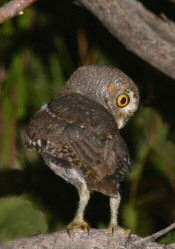
Elf Owl
|
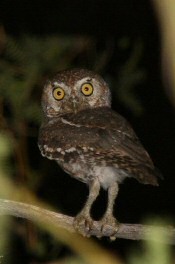
Elf Owl
After eating, we set out to find the little guy, and eventually got some excellent looks and photos.
|
We also happened on a young LOGGERHEAD SHRIKE roosting in a mesquite. Cody Identified some 13 species of moths using his bug light. Chilly winds and 60-degree temps made sleeping on my cot fitful, but that meant I was able to enjoy the serenading of the POORWILLS, the ELF OWLS, a GREAT-HORNED OWL, and a WHISKERED SCREECH-OWL throughout the night.
|
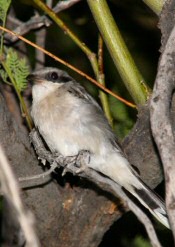
Juvenile Loggerhead Shrike
|
|
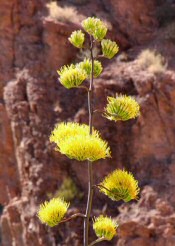
Agave
Shortly after 0600 we set out for the saddle leading up to Signal Peak, the highest point in Yuma County. No one had told me that the trail had gotten considerably steeper since my last climb here two years ago. We battled the torturous footing and the hot sun for about 45 minutes until reaching welcome shade behind a low ridge. Here the 40% grade leveled out some, and we were able to enjoy the SCOTT'S ORIOLES, gnatcatchers, and a distant GILDED FLICKER. |
CANYON TOWHEES and SCOTT'S ORIOLES were the first to greet the dawn, and were soon followed by GAMBEL'S QUAIL and CANYON WREN. As we were packing up, Cody noticed a black bird with white central tail feathers hopping in the wash. We watched in amazement as the out-of-place female GREAT-TAILED GRACKLE looked for breakfast.
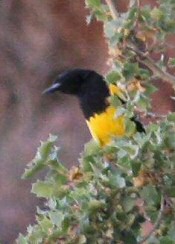
Scott's Oriole
|

Indian Canyon from the saddle
Another half hour of clawing our way up took us to the saddle and a large basin of scrub oaks. Looking out over weedy hillsides, we watched a flock of LESSER GOLDFINCHES picking off the seeds from the spring wildflower crop. |
Below us, in Indian Canyon, we watched a few late migrants--BLACK-HEADED GROSBEAK and WESTERN TANAGER. Soon we heard, and then saw, the first of our two targets: RUFOUS-CROWNED SPARROW.
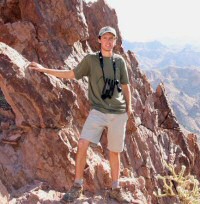
Cody
|
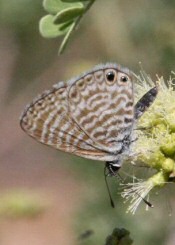
Marine Blue
It was a hard-earned target! We made it back to our vehicle by 0930, and then back to Yuma by 1130. |
A pair of CRISSAL THRASHERS chased each other in the low trees blanketing the bottom of the bowl. After a welcome rest, we finally heard the bouncing-ball call of the BLACK-CHINNED SPARROW and lured it in with our tape.

Ten Ewe Basin
|

Signal Peak
|
|